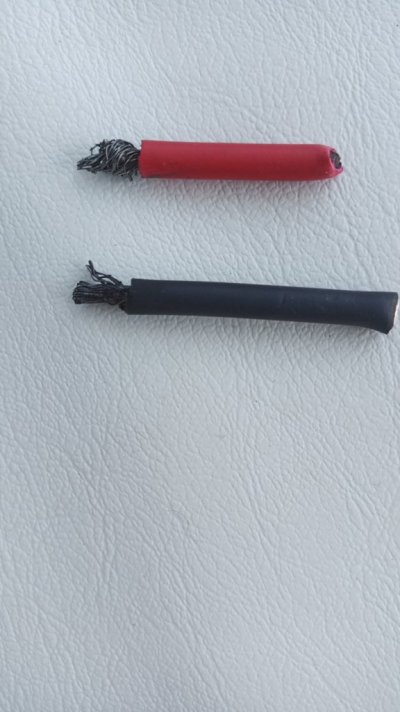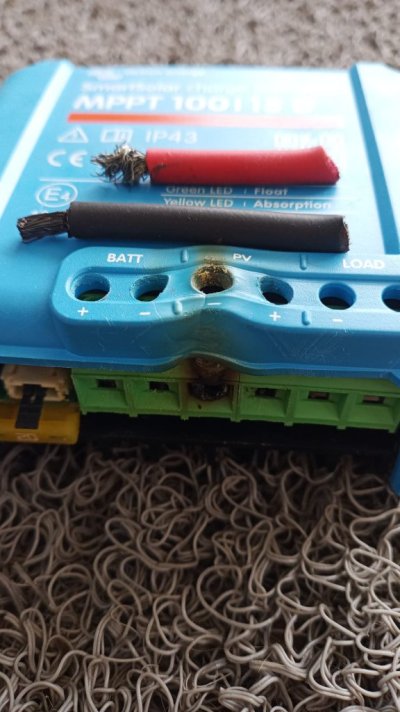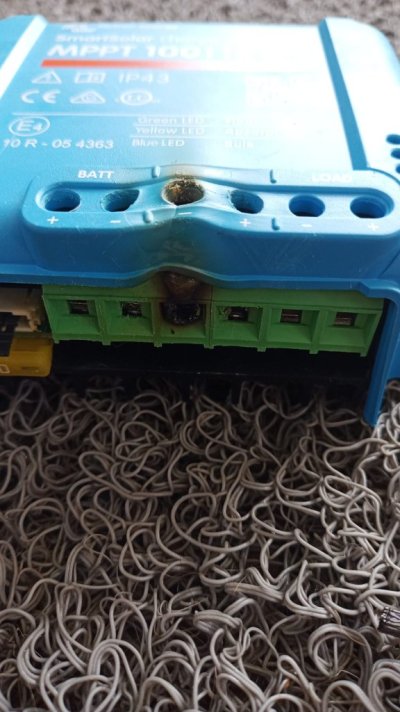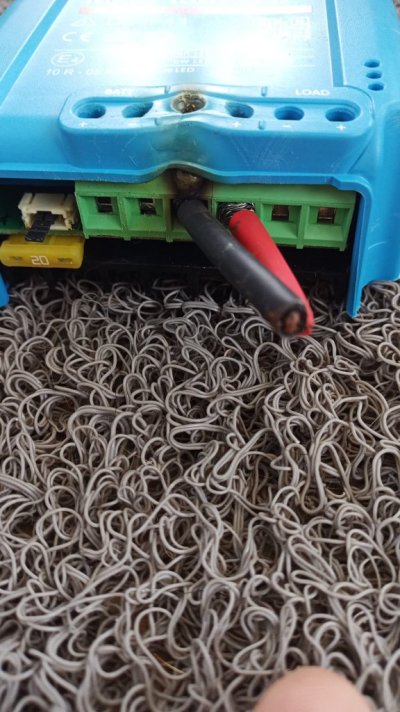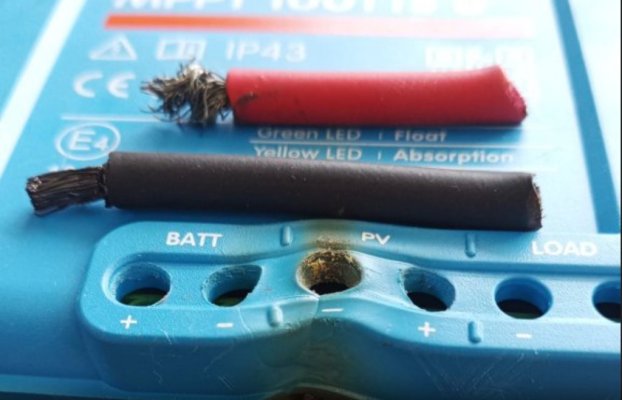Mambo42
Guru
- Joined
- Oct 26, 2021
- Messages
- 976
- Vessel Name
- Endless Summer
- Vessel Make
- 1979 Defever 49
Yesterday we had our second scare in a one year period. Luckily we were onboard when I suddenly smelled the typical scent of an electrical fire. So I jumped in the lazarette, shut everything down and found out that the connection of the cables of one solar panel, leading into the MPPT controller had come loose and subsequently started the melting of the connection block on the MPPT controller.
Would I not have intervened it would have ended up in a fire and possibly loss of the whole boat.
Last year I also had a beginning fire and the cause of the fire was identical, the screws holding the cable had loosened up due to the vibrations of the boat in heavy seas. After the first fire I decided to check all the connections every month, which means that every month I tighten up all the screws / nuts which connect cables. The last time I did it was 3 weeks ago, since that time we have put another 50 hours on the engines and quite a bit of it was in rough weather, so a lot of vibrations.
My question is if anyone has the same problems with connections coming loose and if so, what did you do to stop them from coming loose ? It is absurd that I have to start checking all the connections now on a weekly basis, there has to be a better solution. Unfortunately the producer of the equipment has the position that there is nothing wrong, it is all a matter of incorrect installation by a non knowledgeable installer according to them. I.o.w. not their problem and no need to change anything in the design.
Reason ?
This MPPT controller needs a 5 mm2 cable with cable shoe.
In the country where this equipment was installed a 5 mm2 cable is not available, it is either 4 or 6 mm2 and thus the 6 mm2 was used. As a result however the combination of 6 mm2 plus cable shoe does not fit in the connection block of the MPPT controller and thus the shoe was left out. According to the producer that is the cause of the problem and it is not their problem, I should have used to correct cable and shoe. The fact that those are perhaps not for sale in certain countries does not register with them.
I have e-mailed with a representative of this company and must say that it is clear I am dealing with a sales person. Everything is the mistake of the user and company that installed it. He even went so far that I should tell companies to go to the producer for further training, i.o.w. I have to start doing their job.
Anyway, if anyone has similar experiences I would like to hear it, but mostly I am looking for solutions to stop the cables from coming loose while underway.
Would I not have intervened it would have ended up in a fire and possibly loss of the whole boat.
Last year I also had a beginning fire and the cause of the fire was identical, the screws holding the cable had loosened up due to the vibrations of the boat in heavy seas. After the first fire I decided to check all the connections every month, which means that every month I tighten up all the screws / nuts which connect cables. The last time I did it was 3 weeks ago, since that time we have put another 50 hours on the engines and quite a bit of it was in rough weather, so a lot of vibrations.
My question is if anyone has the same problems with connections coming loose and if so, what did you do to stop them from coming loose ? It is absurd that I have to start checking all the connections now on a weekly basis, there has to be a better solution. Unfortunately the producer of the equipment has the position that there is nothing wrong, it is all a matter of incorrect installation by a non knowledgeable installer according to them. I.o.w. not their problem and no need to change anything in the design.
Reason ?
This MPPT controller needs a 5 mm2 cable with cable shoe.
In the country where this equipment was installed a 5 mm2 cable is not available, it is either 4 or 6 mm2 and thus the 6 mm2 was used. As a result however the combination of 6 mm2 plus cable shoe does not fit in the connection block of the MPPT controller and thus the shoe was left out. According to the producer that is the cause of the problem and it is not their problem, I should have used to correct cable and shoe. The fact that those are perhaps not for sale in certain countries does not register with them.
I have e-mailed with a representative of this company and must say that it is clear I am dealing with a sales person. Everything is the mistake of the user and company that installed it. He even went so far that I should tell companies to go to the producer for further training, i.o.w. I have to start doing their job.
Anyway, if anyone has similar experiences I would like to hear it, but mostly I am looking for solutions to stop the cables from coming loose while underway.

